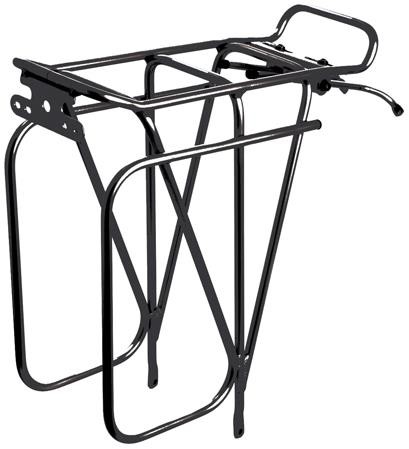Imagine cruising down the road on your trusty bicycle, feeling the wind in your hair and the sun on your face. But then, you find yourself approaching a crosswalk, bustling with pedestrians. Should you have a bell on your bike to politely signal your presence? It’s a question that many cyclists ponder, and in this article, we will explore the benefits of having a bell on your bike and help you decide whether it’s a worthwhile addition to your cycling gear.
Table of Contents
ToggleSafety
Increased visibility
Having a bell on your bike can greatly increase your visibility to pedestrians and other cyclists on the road. The sound of a bell can catch the attention of those around you, ensuring that they are aware of your presence and can take appropriate action to avoid any potential accidents or collisions.
Notifying pedestrians
One of the main benefits of having a bell on your bike is the ability to notify pedestrians of your approach. When riding on shared paths or sidewalks, it’s important to alert pedestrians of your presence, especially if they are unaware of your approach from behind. By gently ringing your bell, you can give pedestrians a heads-up and ensure a safer interaction between cyclists and pedestrians.
Signaling other cyclists
Bells can also be used as a way to communicate with other cyclists on the road. Whether you’re overtaking another cyclist or need to alert them of a potential hazard ahead, a quick ring of your bell can serve as a clear and concise signal to get their attention and convey your message.
Warning motorists
While bells are primarily useful for alerting pedestrians and other cyclists, they can also serve as a warning to motorists. In situations where a driver may not be fully aware of their surroundings, a well-timed ring of your bell can help grab their attention and prevent any potential accidents.
Legal requirements
Local regulations
It’s important to familiarize yourself with the local regulations regarding bike bells in your area. While some cities or regions may not have specific requirements for bike bells, others may mandate their use or specify certain criteria for their functionality. Being aware of these regulations will ensure that you remain compliant and avoid any potential legal issues.
Requirements in different countries
If you frequently travel or plan to take your bike to different countries, it’s crucial to understand the specific requirements for bike bells in those regions. Different countries may have varying regulations on the type of bell required or even whether bells are mandatory at all. Doing your research in advance will help you stay prepared and adhere to any legal requirements during your travels.
Benefits of having a bell
Avoiding accidents
Having a bell on your bike can significantly reduce the chances of accidents occurring. By using a bell to alert pedestrians, other cyclists, and motorists of your presence, you are increasing their awareness and giving them the opportunity to react accordingly. This proactive approach can help prevent potential collisions and keep you safe while on the road.
Preventing collisions
When cycling in crowded areas, it’s not always easy to see and be seen by others. With the help of a bell, you can effectively prevent collisions by quickly and efficiently signaling your presence. By giving others a clear auditory cue, you ensure that they are aware of your whereabouts and can adjust their path or speed accordingly, reducing the risk of accidental collisions.
Improving communication
Effective communication is key when sharing the road with others. A bell on your bike acts as a clear and universally understood signal, allowing you to communicate your intentions and alerts to those around you. This improves overall communication between cyclists, pedestrians, and motorists, creating a safer and more harmonious environment for everyone involved.
Types of bike bells
Traditional thumb-operated bells
Traditional thumb-operated bike bells are the most commonly used type. They are typically mounted on the handlebars, allowing you to easily reach and activate them with a simple press of your thumb. These bells produce a clear and audible sound, making them an effective choice for alerting others of your presence on the road.
Electronic bells
For those seeking a more modern option, electronic bike bells are a great alternative. These bells operate using battery power and often have customizable sound options. They can range from traditional bell sounds to more unique and attention-grabbing tones. Electronic bells are generally easy to operate, and some even come with additional features like built-in lights for enhanced visibility.
Horn-style bells
If you prefer a louder and more assertive sound, horn-style bike bells may be the right choice for you. These bells mimic the sound of a horn, producing a loud and attention-grabbing noise. Horn-style bells are typically operated by squeezing a rubber bulb, giving you full control over the volume and intensity of the sound. They are particularly useful in situations where you need to alert motorists or pedestrians in a loud and busy environment.
Choosing the right bell
Consider the noise level
When selecting a bike bell, it’s important to consider the noise level it produces. While a louder bell may seem like a good idea for increased attention, it’s crucial to strike a balance that is audible without being overly disruptive. Find a bell that produces a clear and distinct sound without causing unnecessary disturbance to those around you.
Ease of use and installation
Another important factor to consider is the ease of use and installation of the bell. Choose a bell that is user-friendly and can be easily operated with one hand. Additionally, ensure that the installation process does not require any extensive modifications to your bike, as simplicity and convenience are key when it comes to bike accessories.
Compatibility with your bike
Before purchasing a bike bell, double-check that it is compatible with your specific bike model. Bells typically come with different mounting mechanisms, so ensure that the one you choose fits securely on your handlebars. Taking the time to ensure compatibility will save you from any frustration or inconvenience down the line.
Durability
Investing in a durable bell is essential for long-term use. Consider the materials used in the construction of the bell and opt for a model that is built to withstand regular wear and tear. A sturdy bell will not only last longer but also maintain its functionality over time, ensuring you can rely on it whenever you need it.
Alternatives to a bell
Using your voice
If you prefer a more personal approach, using your voice to communicate your presence is an alternative to using a bell. Simply saying “Excuse me” or “Passing on your left” in a clear and friendly manner can be an effective way to alert others of your approach. However, keep in mind that vocal signals may not always be audible in noisy or crowded environments, making a bell a more reliable option in certain situations.
Whistle
Another alternative to a bike bell is a whistle. Whistles can produce a shrill and attention-grabbing sound that can be effective in alerting others of your presence. Whistles are compact and easy to carry, and some even come with attachment options for easy accessibility. However, similar to verbal signals, the effectiveness of a whistle may be limited in noisy environments.
Air horn
For those who seek a more powerful and attention-grabbing sound, an air horn can be a viable alternative. Air horns are typically louder than traditional bike bells and can emit a blast of sound that is difficult to ignore. However, it’s important to note that air horns may not be legal or appropriate for all environments, and excessive or unnecessary use can be disruptive and annoying to those around you.
Controversy around bike bells
Bicyclist opinions
Opinions on bike bells among bicyclists are varied. Some cyclists believe that bells are an essential safety tool, while others prefer using alternative methods such as vocal signals or whistles. The controversy stems from personal preferences and the differing cycling cultures and environments in which cyclists find themselves. It’s important to respect and adhere to local customs and regulations while considering your own comfort and safety.
Negative perceptions
Despite their intended purpose, bike bells can sometimes elicit negative perceptions from pedestrians, motorists, and even other cyclists. Some individuals may view the use of a bell as aggressive or antagonistic, associating it with impatience or rudeness. It’s crucial to be mindful of how and when you use your bell, employing it in a polite and considerate manner to avoid any misinterpretations or unnecessary conflicts.
Tips for using a bike bell
Ring it early and politely
When using a bike bell, it’s important to ring it early enough to allow those around you ample time to react and adjust their movements if necessary. Additionally, always use your bell in a polite and considerate manner, understanding that different individuals may react differently to its sound. By approaching bell usage with respect and courtesy, you can ensure a positive experience for both yourself and those around you.
Use in combination with hand signals
While a bike bell can effectively alert others to your presence, it’s crucial to supplement its use with clear and visible hand signals. Hand signals provide additional information to those around you and can help prevent any misinterpretations or confusion. By using a bell and proper hand signals together, you create a comprehensive communication system that promotes safety and understanding.
Understand cultural differences
When cycling in different regions or countries, it’s important to be aware of the cultural differences surrounding bike bells. In some areas, bike bells may be more commonly used and expected, while in others, their usage may be less prevalent. Familiarize yourself with local customs and adjust your bell usage accordingly to ensure a positive and respectful cycling experience in any location.
Maintenance and care
Regular cleaning
To ensure optimal performance, it’s important to regularly clean your bike bell. Dirt, debris, and moisture can accumulate over time, potentially affecting the sound and functionality of the bell. Simply wiping the bell with a clean cloth and removing any visible dirt or grime can go a long way in maintaining its effectiveness.
Checking for damage
Regularly inspect your bike bell for any signs of damage or wear. Ensure that the mounting mechanism is secure and intact, and check for any cracks or breaks in the bell itself. Addressing any issues promptly will help prolong the lifespan of your bell and prevent any unexpected malfunctions while on the road.
Replacing worn-out parts
Like any bike accessory, bike bells may require replacement parts over time. If you notice any deterioration or malfunction, consider replacing the necessary components to ensure optimal performance. This can include replacing the bell itself, the mounting mechanism, or any other parts that may have worn out or become damaged.
Conclusion
Whether or not to have a bell on your bike ultimately comes down to personal preference, but considering the benefits and risks can help guide your decision. Bike bells undoubtedly offer increased safety, allowing you to effectively communicate your presence to pedestrians, cyclists, and motorists. By choosing a bell that suits your needs and practicing proper usage, you can enhance your cycling experience while prioritizing the safety of yourself and those around you. Remember to stay knowledgeable about local regulations and customs, be considerate of others, and enjoy your rides with confidence and peace of mind.







